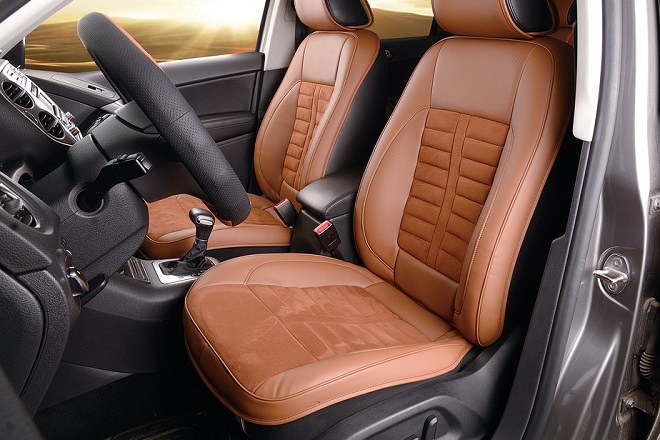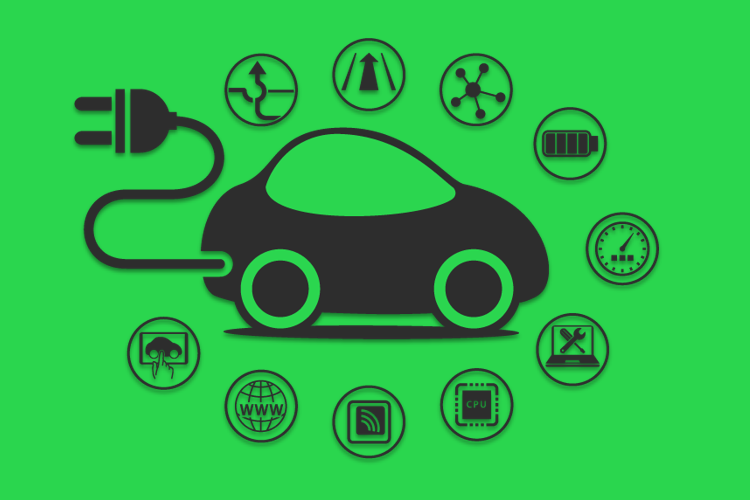Motorcycle helmets, like all other motorbike equipment, need taken care of and used properly. The most essential aspect that consumers overlook is how to wear a motorcycle helmet properly. The majority of us put them on without reading the instructions.
“This is a serious concern since if your motorcycle helmet comes off in an accident, you might get injured or killed,” says Dr. Jimena Vergara-Temoche, head injuries specialist at Santa Casa de Sao Paulo.
The first thing to know about wearing a motorcycle helmet is that you should avoid having much hair beneath it since this will prevent the helmet from fitting comfortably against your head, resulting in less protection in the event of a fall. Always tie back or put up your long hair before putting on your helmet to ensure maximum protection.
The other key thing is the way you should “set” the helmet upon your head. The front should be positioned as far down as possible, and you should adjust the rear chin strap so that there is no space between the chin and the strap. This prevents it from slipping during a fall and protects against ejection of both yourself and your head from under or behind the motorcycle seat which would lead to very bad head injuries, including decapitation if caught by an obstacle such as a curbstone. Another important detail: always tighten side straps first for stability and then secure the chin buckle which otherwise could cause serious problems in case of impact or just because it doesn’t close properly.
On the other hand, you shouldn’t tighten it too much as this restricts breathing and causes neck pain. The helmet also should be worn with its visor down.
Choosing the Correct Size for a Motorcycle Helmet
As a rule of thumb, you should always choose a helmet with a perfect size compatible with your head. You might accomplish this by measuring the circumference of your head and comparing it to the helmet sizes available in shops.
For example, if your head measures 56 cm around, then 58-60 will be the right size for you. However, trying different helmets is always recommended when buying one because everyone’s head shape is unique. This is important because each model comes with different measurements that provide a different fit properly for every use, some are larger while others are smaller than average so you need to find one that perfectly fits your case. Before purchasing a motorcycle helmet, be sure to measure your head size.
Choose your Favorite Motorcycle Helmet Style
There are several different types of motorcycle helmets available on the market, all with their own set of advantages and disadvantages.
Open Face Helmets
Open face helmets are very popular because they provide the rider with great visibility. However, they don’t have a chin protector so in case of an accident you could get injured by debris or even stones kicked up by other vehicles. They are also less expensive than other styles and relatively safe thanks to their open structure which allows for increased airflow.
Half Helmets are half-sized versions of Open Face helmets that offer similar advantages (visibility, good airflow) without leaving your face exposed. Nevertheless, these helmets do not offer protection against objects coming from above (i.e., falling branches).
The Full Face Helmet
The rider’s entire head is enclosed by the full-face helmet. A face shield provides nose and eye protection, while a shell extension known as the chin bar protects the bottom or chin area.
There are many different types of full-face helmets that provide good protection against impacts and the elements. They have an aerodynamic design, but they’re also quiet. This helmet is your best choice if you plan to hit the trails or street ride.
Modular Helmets
Modular helmets are those that can be quickly converted from a full-face configuration to an open-face one. Using a hinged design, the chin bar lifts and rotates up and out of the way with one hand (usually by pushing a button on top), allowing you to place it on your shoulder if you need to carry it around.
Modular helmets may be transformed from a closed-face to an open-face design with a press of a button. The term “modular” was given to this helmet for its modularity. This style of helmet is adaptable, giving the rider a choice between two settings based on their riding manner or demands. For example, a touring motorcyclist may use this helmet for highway travel and then convert it into an open-face helmet when he reaches his destination.
ADV (Adventure Helmet)
If you prefer riding on and off the road, the ADV Helmets is for you. This helmet’s multidimensional capabilities work in both conditions, so you can conveniently change from city rides to tough excursions.
When utilized on streets, it provides you with a safety rating and face shield protection. When used on muddy or dirt roads, they may give you a mud helmet feel with lots of ventilation and plenty of room to fit properly your goggles. This hybrid feature has a drawback in terms of safety.
Dirt Helmet
Dirt helmets offer a super ventilation space and a large peak for you to keep external elements out of the eyes. These helmets are very lightweight but at the expense of safety protection. Some can be converted into street bike helmets by adding an optional face shield, while others cannot be used outside off-road purposes because they don’t meet DOT street-legal safety standards.
Make sure the head shape and size are correct
Before purchasing a motorcycle helmet, you must first measure your head size. Most helmets available on Amazon are adjustable and can be fine-tuned according to your specific measurements.
How does Your Helmet Fit?
Regardless of whether it is an open face, adventure, or other styles, all helmets should fit snugly over your entire head without any gaps between the helmet and your skin. If it’s too tight (uncomfortable) take it off immediately; if there is space around the edges or you can see light through the gap(s), then choose another model. Helmets should feel secure even at higher speeds; make sure that no matter how windy it is, your head won’t be blown off.
Tip: when you shake your head, the helmet should move too (although not too much).
Make sure to try on Motorcycle Helmet before making a purchase
You must try on a helmet before buying it. This is especially true if you plan to purchase an open-face helmet, which, for safety reasons, needs to fit very tightly and perfectly to your head shape or size. Make sure the helmet’s weight is equally distributed throughout.
You should also make sure the helmet’s weight is distributed evenly around your head. To see this information you will have to check the product manual. If you feel that one side of your head weighs more than the other, or if you feel any pressure points, then select another model right away.
Every detail plays its role in ensuring that both your safety and overall riding comfort are at their best levels possible. If are interested in maximizing both these aspects, always keep in mind to get a high-quality helmet that matches the riding style that you have chosen.
If it feels and looks correct, buy it and ride.
When buying a helmet – whether it’s an open face or full face – always remember to test-drive them before purchasing one. This way you can be sure that all elements will meet your requirements and you won’t waste money on something that ultimately doesn’t fit properly. Measure your head size, try on as many helmets as possible.
The Most Frequent Motorcycle Helmet Affecting Issues
With The Helmet on, The Ears Fold up Against The Head.
The main cause of this problem is that you have a smaller head size/shape than the one who made the helmet. To fix this, you must either get a thinner cheek pad insert or swap them with their thicker pair. Another option is to use earplugs, but then again you won’t be able to hear anything!
Another reason can be that your glasses are just too big for your face and they’re pushing down on the cheeks. If that’s not it, then try adjusting how high up the chin strap goes under your chin as it may be too tight from there.
It’s Difficult to Choose Between Head Shapes
The three most common head shapes are round intermediate oval and long oval. If you have a round shape, helmets will often feel too tight on the front-to-back part of the skull from ear to ear or cause your cheeks to be pinched at the temple area.
In this case, you should go with a helmet that is slightly longer. Intermediate ovals can wear both types of helmets comfortably because there’s enough room for an appropriate adjustment. As for people who have a longer shape – they should always go with a full-face motorcycle helmet or else their forehead will get squished up against the visor if they ever decide to try out an open-face model instead!
A Motorcycle Helmet That Is Too Tight May Cause Hair Loss
If your motorcycle helmet is still too tight after several hours of usage, this might lead to hair loss and can be harmful to your health. Because you’re concerned about hair loss, you don’t have to stop wearing the helmet. If the liner does not break with usage and you are still worried, get a larger size that should fit snugly, or consider getting a custom-fit helmet.
Is it possible to replace the Pads for My Motorcycle Helmet?
Yes, in most cases you can and it is recommended. Why? Because even for the same brands and models, the pad thickness is different from one piece to another. Also, newer cheek pads will break in more easily than your older ones after wearing them during many hours of riding. Even if you manage to find a helmet within your budget that looks good and fits well, simply avoid it if the comfort cheek pads are old and worn out because they will no longer serve their purpose correctly when you need them most!
Conclusion
Finding the best fitting, most comfortable helmet can be a difficult task. But with proper information and some time devoted to the research, finding the perfect one for you will become that much easier.
The key is to go to your local bike shop or swap meet and try on as many motorcycle helmets as you can until you discover one that fits just right. It may take some time, but it’s worth it if wearing a proper fit improves safety rating.
Finally, low-cost counterfeit Motorcycle helmets are inexpensive on the internet, so there’s no excuse not to give them a go! Remember that price alone does not always indicate quality; it may come back to haunt you in ways you never dreamed.
I am Mubashir As the owner, I am always on the lookout for innovative changes in motorcycle helmets to help our users find the fit. Helmetswheel.com is an online blog where we provide guides & reviews on some of the best helmets out there.




